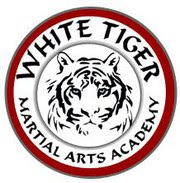Pressure points are one of the most misunderstood and exaggerated areas of MA.
Kyusho is the Japanese word.
PSNA stands for Pressure Sensitive Nerve Areas, an American anacronysm.
People who don't know about them claim there are anywhere between 25 and 360 and they do various things. You can buy lists and charts showing all kinds of alleged PSNA. Most of these do nothing. The ones that do something are meaningless unless you are shown how to apply them in combat in real tme.
For example, we punch to the chin for a KO. A groin kick will stop an attacker. But to actually land these shots you need to train for them, not just know them theoretically. So it is with PSNA.
I teach a primary list of 54 PSNA for use in combat.
(One for each week of the year more or less!)
I do not give out lists and charts to be memorised. You learn these PSNA in context, in the dojo, and you remember them.
There are 3 kinds of PSNA:
ones you strike
ones you press
ones you rub
What I NEVER want to see is people in class trying to explain to each other what PSNA are "There's one there", "there's one there", things like that. You learn these at the proper time in the proper context, not from some chart or book, or what "a mate who does Jujutsu showed me".
Practice, not theory! ;D
Keep I mind you can strike and grind these points with stick as well as your "body tools".
Here is a list of the first 26 you have already been introduced to in class and that you will no doubt recognise (and remember painfully!).
Eyes and groin are obvious PSNA that can be atacked by a strike or pressure.
The eyes and called ganseki. The groin is kinteki.
Wanshun is the back of the upper arm, the tricep.
In the lap sao drill you strike this point.
In ikkyo henka you rub the tendon just above the elbow.
In tonfa ikkyo this point is self evident.
Kokutsu is the shinbone.
We have all had that experience where you've "barked" your shin on the coffee table when crossing the room in a hurry.
In combat we strike kokutsu to give him that "coffee table moment".
Hizakansetsu is the knee joint, attacked with a strike, usually a kick.
Uchikurobushi is the inside of the ankle joint.
Believed by some to be the most painful PSNA on the body, especially when rubbed.
Sobi is the back of the leg at the base of the calf.
A good target in keri kudaki, or vertical grappling.
Yako - the inside of the upper thigh, the long muscle. Painful if kicked at kb or vertical grappling range.
Fukuto - Ben's vastus the "teardrop" muscle at the lower inner thigh, just below where Yako runs to. The target of the "Ben Kick".
Miyakudokoro - inside the forearm.
Against an opponent punching you will cause real pain when cut into with your shuto.
Also a press and rub point when applying locks, particularly yonkyo.
Akiresuken - the achilles tendon.
Can be attacked with a strike.
Particularly effective when pressure is applied in ground fighting.
Three well known body blows are:
Suigetsu - solar plexus.
Kanzo - the liver.
Jinzo - the kidneys.
Sonu - the base of the throat, great for an ippon nukite strike or pressure attack.
Shofu - side of the neck - attack with shuto.
Keichu - nape of the neck. Attack with shuto.
The site of boxing's infamous "rabbit punch".
Komekami - the temple.
Three on the face which can be struck or pressed:
Miken - nasion or bridge of the nose
Jinchu - philtrum
Gekon - the labret point
NOTE: You CANNOT kill somebody by "punching the nose bone into the brain" That is a common myth spread by people who have no real experience. If this was possible boxers would die in the ring every week.
Mikazuki - the jaw - KO!
Hichu - adam's apple
Soto - Quad sweep, the outer thigh, where we land the Thai kick.
Kori - upper foot. Stamp on this!
Shuko - back of the hand. Strike or grind.
Tendo - the crown
Tento - the fontenalle
Mimi - the ears
Seidon - above and below the eyes
Danchu - the summit of the sternum
Kyototsu - the ren point at the base of the sternum
Kyoei - the 5th/6th rib space, beneath the armpit
Inizuma - above the hip - the iliac crest
Ushiro inazuma - the ischium
Ganchu - pec insertion
Myojo - the dan tien - below the navel - the bladder
Denko - the 7th/8th rib space
Kusagakure - the outer top foot
Dokko - mastoid - behind ear
Soda - between the shoulder blades - summit of T spine
Katsusatsu - spine T12/L1
Kodenko - base of spine - L5/sacrum
Bitei - coccyx
Hijizuma - elbow joint tendon - brachioradialis
Ude kansetsu - elbow joint - bone
Kote - wrist
Uchijakuzawa - inner forearm
Sotojakuzawa - outer forearm
The miyakudokori tendon at the wrist pulse
Deltoid
Bicep
Thumb pot
Clavicle - sternocleidomastoid
Chin shelf ren point
Zygomatic - cheekbones
